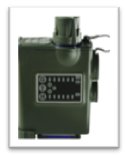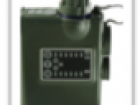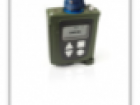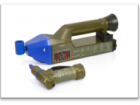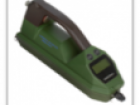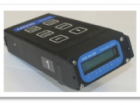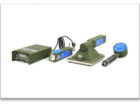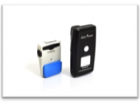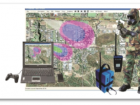News
Argon Electronics (UK) Ltd at DSEI
Founded in 1987, Argon Electronics has become a world leader in the critical area of Chemical, Biological, Radiological and Nuclear (CBRN) training. Argon has simulated detectors made by the leading manufacturers including Smiths Detection, Proengin, Canberra, Thermo Scientific and Bruker. The British company is headquartered in Luton, Bedfordshire and it is a globally trusted strategic partner for manufacturers and training systems providers such as SAAB. Argon simulators are used in countries including the UK, US, Canada, Sweden and Portugal.
The need for CBRN Training
Training for the occurrence of a CBRN emergency has never been more important. It is no longer an optional luxury. CBRN experience cannot just be turned on after an incident; it takes time to grow the capability and understanding. Armed Forces, Nuclear facilities, local law enforcement officials and first responders need to know what to do in the event of an accident or deliberate attack. Simulating chemical or radiation attacks and incidents is a much safer method of training than being exposed to potentially fatal live agents, toxic substances or radiological sources.
Thanks to the close relationships Argon has developed with the original equipment manufacturers, its simulators all offer exceptionally high levels of fidelity and quality, making them appear as realistic as possible and operational in real time. This enables the users to have what Argon describes as "Real Experience Training" in a safe, environmentally friendly manner.
Argon's customers have learned that collaborative performance analysis after a training exercise further enhances the knowledge gained from the activity. Argon's simulators are designed to facilitate this.
Guide to the Argon Stand at DSEI:
At DSEI 2015, Argon is demonstrating a range of its chemical and radiological detection simulators, as well as unveiling its ground-breaking next generation PlumeSIM CBRN training system, with which all of the detectors on display are compatible. All of the simulators on the stand are powered with the same power systems (batteries) as the live products they replicate and incorporate simulated consumables as appropriate, further enhancing the authenticity of the devices and enhancing the user's experience.
Chemical Detector Simulators:
LCD3.2E-SIM: The simulator version of the compact and lightweight Smiths Detection Chemical Warfare Agents (CWA) and Toxic Industrial Chemicals (TIC) detector can be hand-held or mounted on a fixed platform.
The device can simulate wind direction and temperature changes, as well as levels of contamination, decontamination and persistency of toxic substances.
In monitor mode, the LCD3.2E-SIM can teach detection of traces of nerve, blister, choking or blood agents, and in survey mode, it can be used to train how to check cargo, equipment and facilities.
LCD3.3-SIM: Argon has simulated the Smiths Detection CWA and TIC detector.
The Advanced Warning Device can be hand-held or clipped to a belt or harness.
The simulator has both monitor and survey modes and comes with an external survey nozzle for detection, identification and measuring chemical agents and warning the wearer.
The device also replicates the detector menu system including foreign language support.
AP4C-SIM: Simulating the French Proengin handheld chemical detector, the AP4C-SIM replicates the detection of vapour, aerosols, dust and liquid chemical agents.
It can test for contamination, decontamination and persistency of substances such as phosphorus, sulphur and ammonia. The simulator can mimic the detector's real-life ability to help differentiate false positives when used with different detector technologies.
The device comes with a remote control for the instructor, who then has the ability to control levels of contamination during an exercise or simulate wind, temperature or the battery depletion of the detector.
The remote control also allows the instructor to simulate depletion of consumables.
RAID-M100-SIM: Argon has also developed a simulator of the Bruker RAID-M100 chemical agent detector, which can identify CWA and TIC at even the lowest levels.
Compatible with all other Argon simulators, the system provides a powerful training capability providing feedback of correct use of the simulator.
Radiation Simulators:
ADM300-AV1B-SIM: Replicating the Canberra radiation detector, the ADM300-AV1B-SIM simulates detection of beta and gamma radiation.
The device shows the dose rates of simulated radioactive material and has a variety of alarm settings and analogue and digital displays. It has been designed to train personnel in critical search and rescue, reconnaissance and surveying, as well as mapping, shielding and safe demarcation in challenging environments.
RDS100/AN/PDR-SIM: This simulated version of the Canberra radiation detector family has been designed to simulate alpha, beta and gamma radiation.
The device can be used for training in survey, reconnaissance, surveillance and mapping, and assessing levels of contamination or decontamination.
Comprising three external simulation probes for detection of Alpha, Beta and Beta/Gamma radiation. This simulator is also compatible with the Canberra AN/PDR-77 system survey meter, which also detects x-ray radiation and is widely used throughout the world.
EPD-MK2-SIM: Thermo Scientifics' EPD Mk2 Electronic Personal Dosimeter (EPD) for measuring an individual's exposure to radiation is simulated in this small, wearable device.
It was designed to simulate monitoring of levels of beta, gamma, neutron and x-ray radiation and simulates various levels of dosage, with audible and visual alarms.
This particular simulator is especially good for individual or group training, with a body-mounted Local Player Unit.
The simulator is also compatible with the Thermo management system for data logging.
PlumeSIM Table Top and Wide-Area Field Trainer:
Next Generation PlumeSIM, launching at DSEI, is the latest iteration of Argon's globally used training system for CBRN response. This portable system enables remote instructor management of a variety of different CBRN detector/meter simulators and multiple personnel under a fully-configurable "virtual plume" in real time and over user-selected mapping. PlumeSIM can be deployed both in the classroom, where hand-held gaming controllers are used, and out on field exercise, with body-worn player units which track location, monitor activity and maintain communication with the exercise's controller.
PlumeSIM allows an instructor to define a plume or hotspot based on a variety of specific substances or chemical agents including radiological releases / "Dirty Bombs" and implement different release characteristics, such as persistence or duration, as well as being able to determine precise environmental conditions and other external factors.
Recording of table-top and in-field activity means that PlumeSIM not only provides sufficient material to enable a post-event collaborative exercise review for individuals or groups, but also that it can serve as a tool for independent moderators for response capability assessments and evaluation of contingency plans.
PlumeSIM is already in use with the UK, US and Canadian armed forces, and there is interest growing in countries such as the Netherlands, Sweden, India and Australia.
During DSEI, Steven Pike, Argon's Managing Director, will be available for interview
at the UK Pavilion on Stand S4-270.



